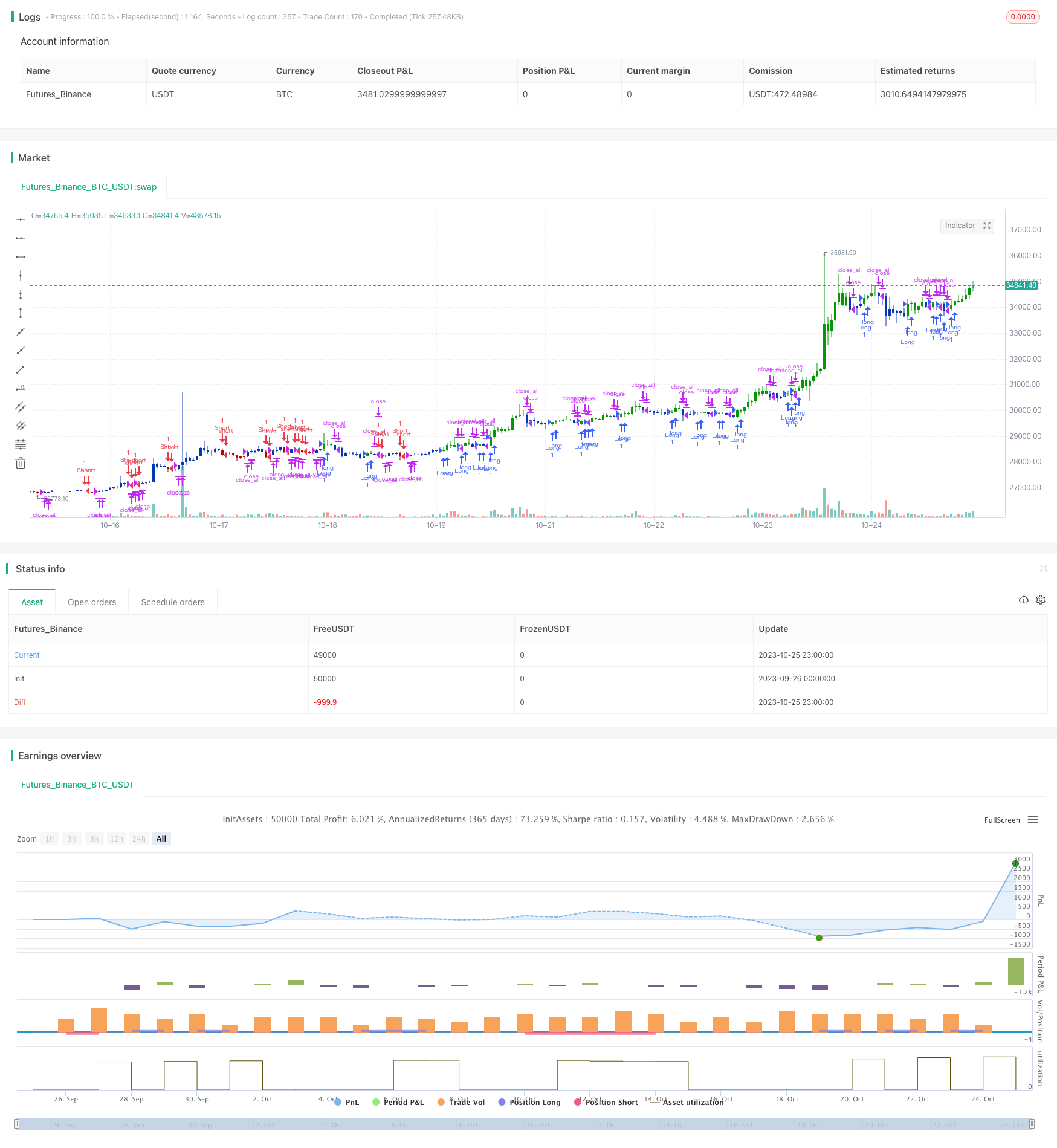
概述
双重超跌翻转突破系统是一种结合趋势跟踪和反转交易的量化策略。该策略通过计算股价较之前N天收盘价是否出现连续超跌信号,进而产生买入信号;同时结合计算特定参数的T3移动平均线,产生卖出信号,实现获利保护。
策略原理
该策略由两部分组成:
- 123反转系统
根据书中描述,该反转系统观察过去N天的收盘价变化,如果今天的收盘价较前一日收高,且前一日较前两日收盘价收低,即视为连续两日超跌信号,该系统产生买入信号。此外,该系统还会结合STOCH指标,如果今日的STOCH快线低于慢线,则进一步确认买入信号有效性。
- T3移动平均线
T3移动平均线是根据一定计算公式,结合价格的指数移动平均线计算而来。其通过一定的参数,调节移动平均线对价格变化的灵敏度。当价格上穿T3移动平均线时,产生卖出信号。
该策略将上述两部分信号综合,当同时满足123反转的买入信号和T3移动平均线的卖出信号时,对应的产生真实的交易信号。
优势分析
- 反转交易策略,适合择底买入,跟踪超跌反弹行情
- 移动平均线策略,有利于锁定盈利,规避风险
- 双重信号结合,可以提高信号有效性,减少假信号
- 兼具趋势跟踪和反转交易的优点
- 参数可调整,可以灵活适应不同行情
风险分析
- 反转信号可能出现误判,产生亏损交易
- 参数设置不当可能导致交易频繁,增加交易成本和滑点成本
- 移动平均线产生的卖出信号可能过早锁定盈利
- 行情剧烈变动时,止损风险依然存在
- 需要优化参数设定,以针对不同品种选择最佳参数
针对风险,可采取如下措施:
- 适当调整反转交易的参数,确保信号有效性
- 调整移动平均线的参数,适当延长持仓时间
- 增加止损策略,降低单笔损失
- 优化参数选择,针对不同品种分别选择参数
优化方向
该策略可以从以下几个方面进行优化:
- 增加过滤条件,确保交易信号有效性
可以在原策略的基础上,增加其他技术指标作为过滤条件,如增加成交量的突破条件等,从而避免因噪音导致的错误交易。
- 调整参数设置,适应市场环境
可以通过多种参数组合进行回测,选择参数对应收益率最高的组合,以优化策略效果。也可以设定动态参数,根据市场情况实时调整。
- 结合机器学习技术,实现策略的自适应优化
例如,可以收集大量历史数据,利用机器学习训练模型,来预测最佳的买入卖出时机。并实时优化策略的参数。
- 根据不同品种特点,设定独立的参数
不同品种特性不同,适合的参数也会有所差异。可以根据不同品种数据进行单独回测,设定独立的参数。
总结
双重超跌翻转突破系统综合了趋势跟踪和反转交易的优点。它能在超跌阶段买入较低价格,并利用趋势获利后及时止盈。该策略反转信号与趋势信号的有效组合,可以有效获取反转机会的同时锁定盈利。虽然仍存在一定风险,但可通过参数优化、增加过滤条件等方式进行改进,以适应不同市场环境。该策略为量化交易提供了有效的思路,值得进一步优化应用。
/*backtest
start: 2023-09-26 00:00:00
end: 2023-10-26 00:00:00
period: 1h
basePeriod: 15m
exchanges: [{"eid":"Futures_Binance","currency":"BTC_USDT"}]
*/
//@version=4
////////////////////////////////////////////////////////////
// Copyright by HPotter v1.0 16/09/2021
// This is combo strategies for get a cumulative signal.
//
// First strategy
// This System was created from the Book "How I Tripled My Money In The
// Futures Market" by Ulf Jensen, Page 183. This is reverse type of strategies.
// The strategy buys at market, if close price is higher than the previous close
// during 2 days and the meaning of 9-days Stochastic Slow Oscillator is lower than 50.
// The strategy sells at market, if close price is lower than the previous close price
// during 2 days and the meaning of 9-days Stochastic Fast Oscillator is higher than 50.
//
// Second strategy
// This indicator plots the moving average described in the January, 1998 issue
// of S&C, p.57, "Smoothing Techniques for More Accurate Signals", by Tim Tillson.
// This indicator plots T3 moving average presented in Figure 4 in the article.
// T3 indicator is a moving average which is calculated according to formula:
// T3(n) = GD(GD(GD(n))),
// where GD - generalized DEMA (Double EMA) and calculating according to this:
// GD(n,v) = EMA(n) * (1+v)-EMA(EMA(n)) * v,
// where "v" is volume factor, which determines how hot the moving average’s response
// to linear trends will be. The author advises to use v=0.7.
// When v = 0, GD = EMA, and when v = 1, GD = DEMA. In between, GD is a less aggressive
// version of DEMA. By using a value for v less than1, trader cure the multiple DEMA
// overshoot problem but at the cost of accepting some additional phase delay.
// In filter theory terminology, T3 is a six-pole nonlinear Kalman filter. Kalman
// filters are ones that use the error — in this case, (time series - EMA(n)) —
// to correct themselves. In the realm of technical analysis, these are called adaptive
// moving averages; they track the time series more aggres-sively when it is making large
// moves. Tim Tillson is a software project manager at Hewlett-Packard, with degrees in
// mathematics and computer science. He has privately traded options and equities for 15 years.
//
// WARNING:
// - For purpose educate only
// - This script to change bars colors.
////////////////////////////////////////////////////////////
Reversal123(Length, KSmoothing, DLength, Level) =>
vFast = sma(stoch(close, high, low, Length), KSmoothing)
vSlow = sma(vFast, DLength)
pos = 0.0
pos := iff(close[2] < close[1] and close > close[1] and vFast < vSlow and vFast > Level, 1,
iff(close[2] > close[1] and close < close[1] and vFast > vSlow and vFast < Level, -1, nz(pos[1], 0)))
pos
T3A(Length, b) =>
pos = 0.0
xPrice = close
xe1 = ema(xPrice, Length)
xe2 = ema(xe1, Length)
xe3 = ema(xe2, Length)
xe4 = ema(xe3, Length)
xe5 = ema(xe4, Length)
xe6 = ema(xe5, Length)
c1 = -b*b*b
c2 = 3*b*b+3*b*b*b
c3 = -6*b*b-3*b-3*b*b*b
c4 = 1+3*b+b*b*b+3*b*b
nT3Average = c1 * xe6 + c2 * xe5 + c3 * xe4 + c4 * xe3
pos:= iff(nT3Average > close, -1,
iff(nT3Average < close, 1, nz(pos[1], 0)))
pos
strategy(title="Combo Backtest 123 Reversal & T3 Averages", shorttitle="Combo", overlay = true)
line1 = input(true, "---- 123 Reversal ----")
Length = input(14, minval=1)
KSmoothing = input(1, minval=1)
DLength = input(3, minval=1)
Level = input(50, minval=1)
//-------------------------
line2 = input(true, "---- T3 Averages ----")
LengthT3 = input(5, minval=1)
b = input(0.7, minval=0.01,step=0.01)
reverse = input(false, title="Trade reverse")
posReversal123 = Reversal123(Length, KSmoothing, DLength, Level)
posT3A = T3A(LengthT3, b)
pos = iff(posReversal123 == 1 and posT3A == 1 , 1,
iff(posReversal123 == -1 and posT3A == -1, -1, 0))
possig = iff(reverse and pos == 1, -1,
iff(reverse and pos == -1 , 1, pos))
if (possig == 1 )
strategy.entry("Long", strategy.long)
if (possig == -1 )
strategy.entry("Short", strategy.short)
if (possig == 0)
strategy.close_all()
barcolor(possig == -1 ? #b50404: possig == 1 ? #079605 : #0536b3 )